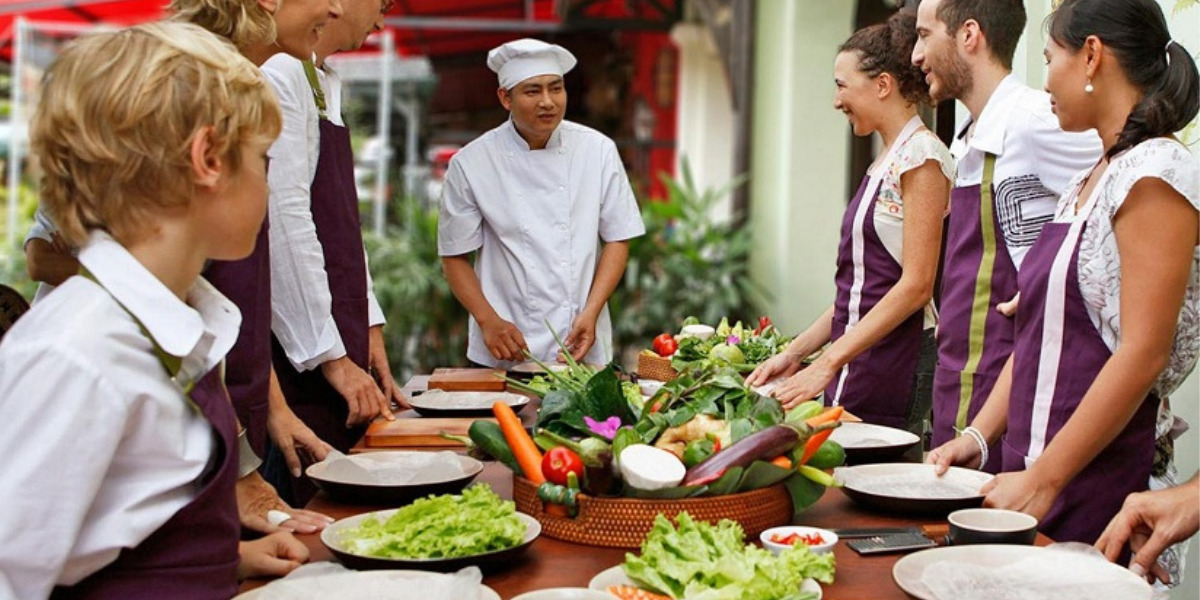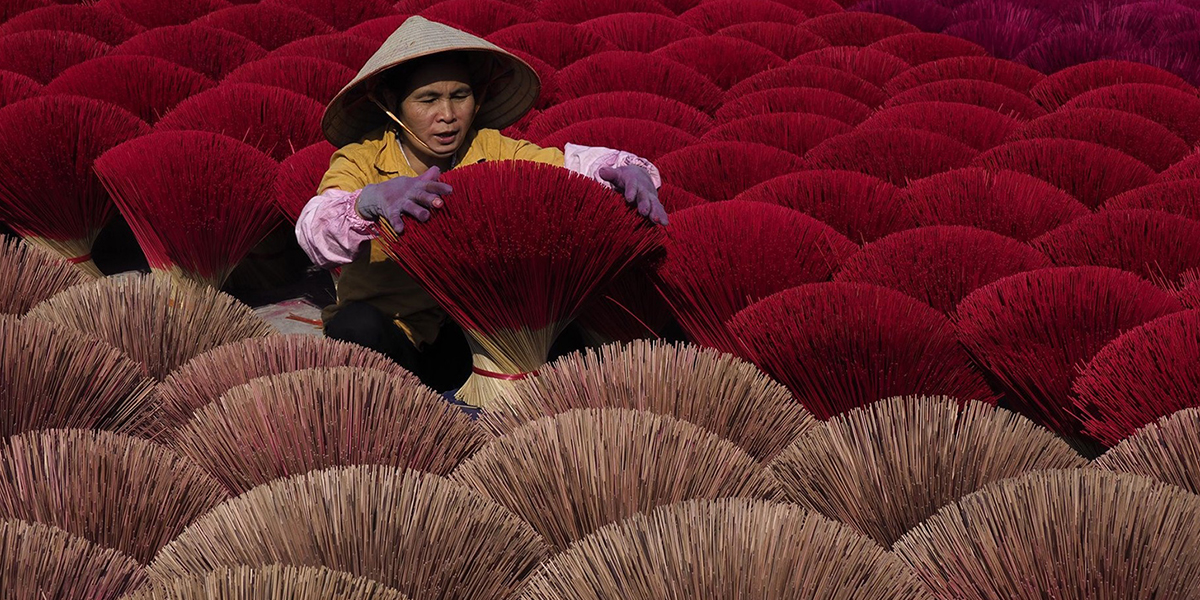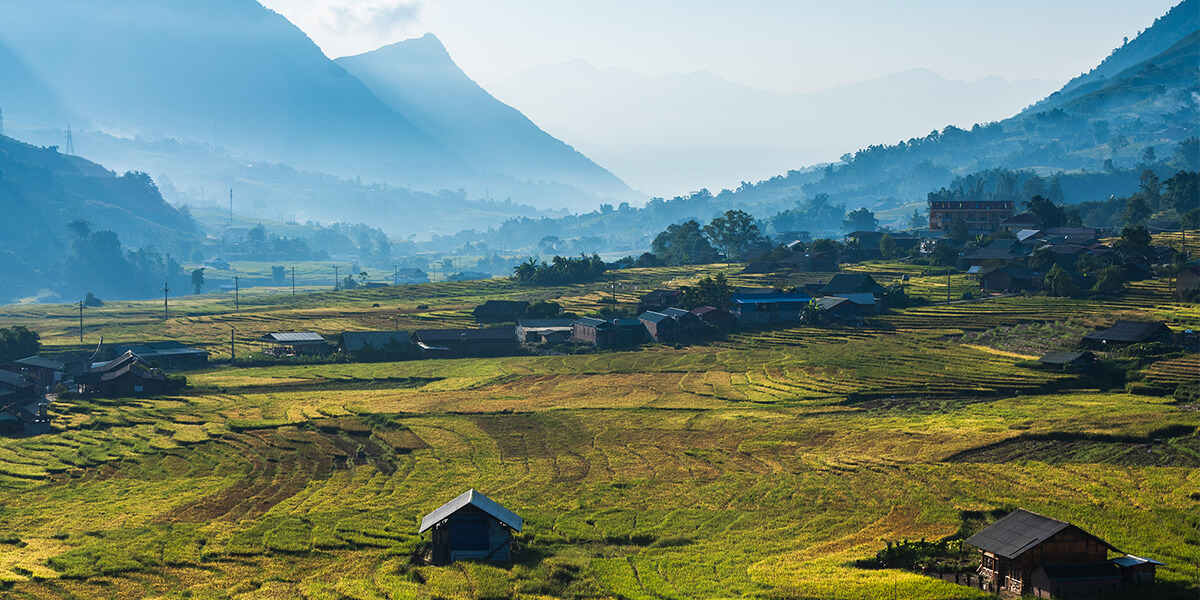If Chinese cuisine focuses on health and nutritional quality, Japanese cuisine focuses on the display and visual experience of diners, Vietnam tends to gravitate towards developing the sense of taste. But it does not mean that Vietnamese cuisine history lacks sophisticated dishes with eye-catching appearances.
I - Cuisine in Vietnam in terms of philosophical meanings
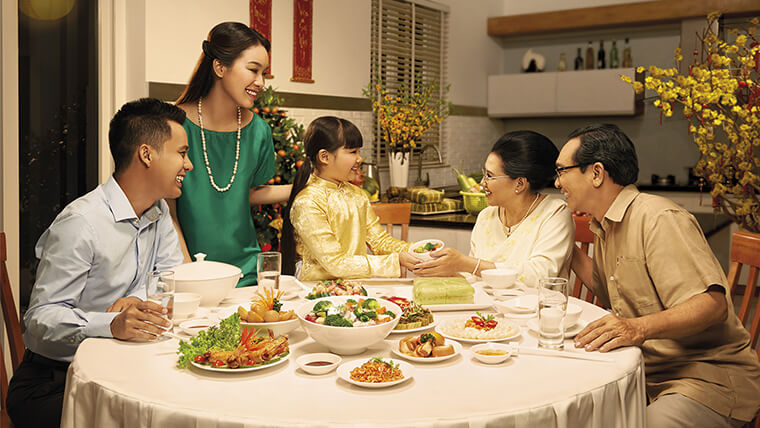
Vietnamese family meal - Source: Internet
The food or the processing of raw materials is merely to meet daily nutritional needs. Vietnamese cuisine is the result of the Feng Shui philosophy researching processes corresponding to the human body.
1 - The 5 elements of the cuisine of Vietnam
Accordingly, everything in nature is composed of 5 basic elements: Wood - Metal - Water - Earth - Fire. The human body, too, applies these five elements to the five organs: the Wood corresponds to the gallbladder, Fire to the small intestine, Earth to the abdomen, Metal corresponds to the large intestine and Water responds to the urinary bladder. Similarly, the five elements correspond to the five flavors that a human can taste, namely Sour (Wood); Bitter (Fire); Sweet (Earth); Spicy (Metal); Salty (Water).
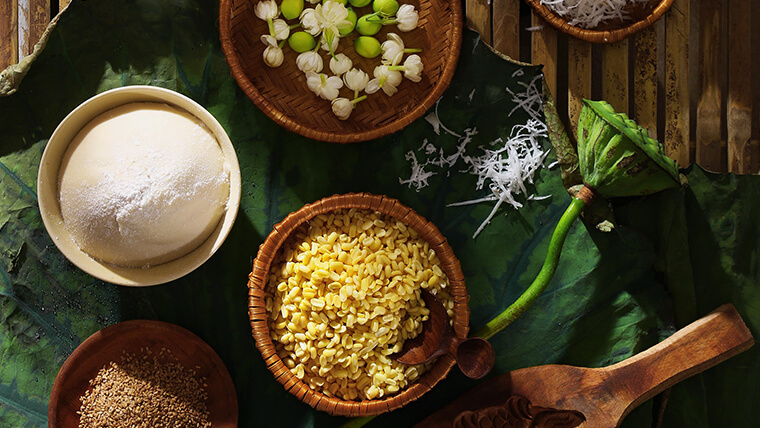
Decorating Vietnamese food - Source: Chris Bui
When it comes to cuisine in Vietnam, Vietnamese people always try to combine all of these factors in one dish and the harmony of sour, spicy, salty, sweet, and bitter tastes creates a very unique flavor. At the same time, Vietnamese cuisine dishes can simultaneously arouse the five senses including Sight - arrangement, color of food; Hearing - sound when chewing crunchy part; Taste - enjoy the five flavors; Smell - the aroma of food and spices accompany; Touch - with hand-eaten dishes like Banh Mi, Nem Lui, rolled dishes,…
2 - The balance of yin - yang in the cuisine in Vietnam
In order to promote and maintain good development, everything must ensure the harmony of yin and yang, the cuisine of Vietnam is no exception. In the cuisine world, the yin, "cools" the body while yang "warms" the body, the “cool” food will be cooked with spices that are also “cool” and vice versa. This ensures that the food which is served not only provides adequate nutrition but is also good for the digestive system and health in general.
II - The diversity of cuisine in Vietnam
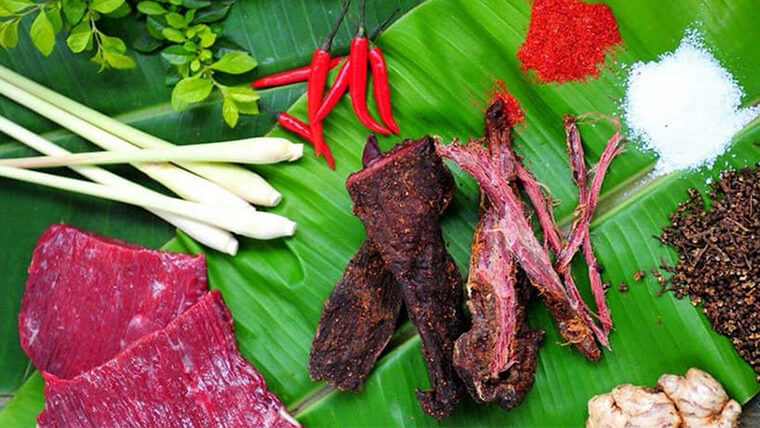
Buffalo meat upstairs kitchen is a unique specialty in the Northwest of Vietnam - Source: Internet
The variety in food processing habits of the people in Vietnam is due to the different influences of regional climates, living habits, and cultural practices. As a result, Vietnamese cuisine has its own distinctive characteristics in each region. More specific:
- Northern cuisine: In favor of the dishes with saltiness, exquisite presentation, and unique processing method.
- The cuisine in Vietnam’s Central region: Favoring spicy, cool, and watery dishes with sophisticated processing and beautifully presented. In particular, the most outstanding and recognized by international friends are the Hue royal dishes.
- Southern cuisine: Meanwhile, the dishes in the South or the Southwest favor sweetness, simple processing but still fully seasoned.
- Ethnic cuisine: In addition, in many rural areas where the ethnic minorities live, each ethnic group will have its own unique dishes which are very popular with customers such as Buffalo meat upstairs kitchen, strewed horse meat and organs…
It is the distinct lifestyle and specific climate that Vietnamese cuisine culture has such a diverse development base. In particular, each region has dishes that are extremely popular with international friends such as Pho in the North; Hue style beef noodles in the Central, and Banh mi in the South,...
III - Cuisine in Vietnam: the eating habits of Vietnamese people
Unlike Western countries where people use knives and forks to enjoy food, Vietnamese dishes are usually served with chopsticks, spoons, or bare hands depending on the certain type of dish. All savory dishes, soups, or stews are presented together in a small tray. During the meal, everyone will take cooked rice into the bowl to eat with. In some dishes, such as pho, vermicelli, etc., all ingredients will be put into a large bowl, carefully mixed and diners will enjoy it with chopsticks.

Chung cake is a traditional dish in cuisine in Vietnam - Source: Tran ngocc
The eating and drinking culture of Vietnamese people has changed a lot to suit the historical and development stages of the country. In feudal times, men ate in the upper tray while the women ate in the lower tray, elderly people would sit higher compared to children sitting on the ground. Now, the whole family of generations will gather around the tray and eat together. Moreover, depending on the food and how to enjoy it, each food dish has a different layout.
VI - Famous artisans and chefs in Vietnamese cuisine
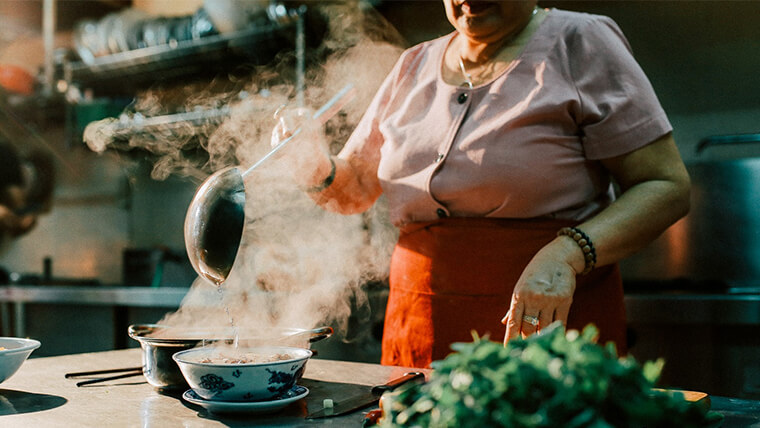
Vietnamese specialties - Source: Kenh14
In fact, many Vietnamese people have made their own names at many international culinary arenas thanks to the dishes imbued with Vietnamese signature identity. Among them, there are some famous chefs that can be mentioned such as artist Ton Nu Thi Ha; chef Luke Nguyen; chef Phan Ton Tinh Hai; chef Christine Ha; chef Duong Huy Khai,... They are the "wings" for Vietnamese culinary to get closer to international friends and contribute to helping the cuisine of Vietnam be more recognized in the global arenas.
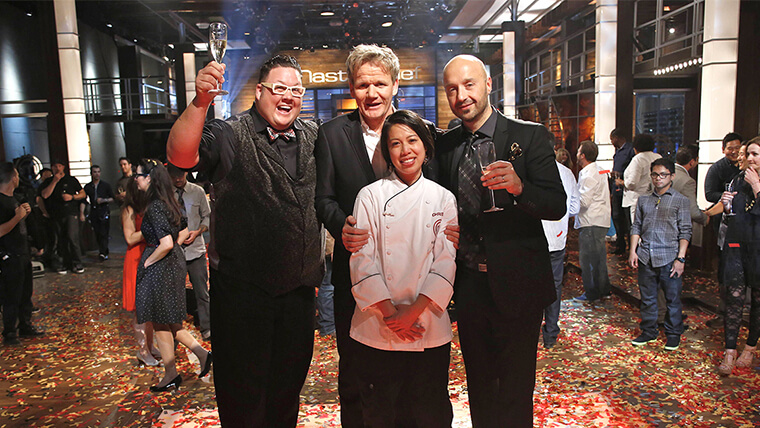
Christine Ha in the Masterchef US- Source: Goldenspoonawards
Today, it is not difficult for people who are far away from home to enjoy the taste of their homeland because anywhere, any territory where Vietnamese people set foot, you can find restaurants serving food with signature colors of Vietnam. Moreover, these are all famous restaurants, which are very popular with customers and international friends as well, introducing the unique cuisine of Vietnam.
That is an overview of cuisine in Vietnam. For an insightful view of Vietna travel, you can discover more on the Localtravelidea.







 — Duy Linh
— Duy Linh



















